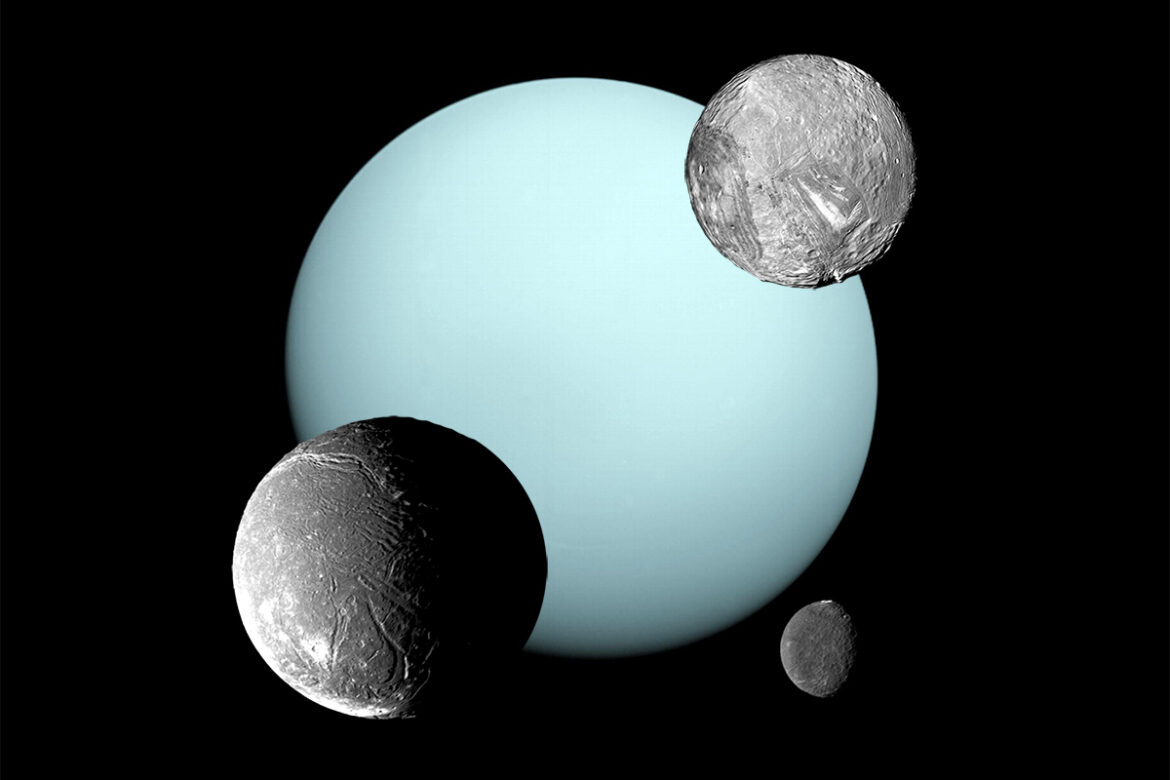In a groundbreaking study, scientists from Johns Hopkins University and the University of North Dakota have discovered intriguing evidence that Uranus’ moon Miranda might contain the natural resources required to sustain alien life. The research, which holds promising implications for the search for extraterrestrial life, was published in The Planetary Science Journal.
According to planetary scientist Tom Nordheim, “To find evidence of an ocean inside a small object like Miranda is incredibly surprising.” The discovery of these potential water sources suggests that Miranda may be hiding subsurface oceans, an exciting development that expands the possibilities for ocean worlds even among the distant moons of Uranus.
Potential for Alien Life on Miranda
Miranda is not the only moon of Uranus to attract scientific curiosity. Earlier NASA research had focused on other moons, such as Ariel, Umbriel, Titania, and Oberon, where deep water-filled gorges might also harbor signs of extraterrestrial life. However, Miranda’s case stands out due to the presence of its rugged and grooved terrain, which was reanalyzed from images captured by Voyager 2 in 1986. This “Frankenstein-like” landscape, featuring a mix of rough textures and ridges on its southern hemisphere, led researchers to hypothesize that the tidal forces between Miranda and nearby moons could create internal heat, which, in turn, may produce subsurface oceans.
How Miranda Could Shape Our Understanding of the Solar System
Lead researcher Sherry Fieber-Beyer explains that studying Miranda and its potential for harboring oceans could provide scientists with deeper insight into solar system formation. “It also helps us understand how the movements of giant planets can lead to the creation of moons and asteroids,” Fieber-Beyer adds, highlighting that these discoveries may uncover critical details about planetary evolution.
Further, planetary scientist Caleb Strom emphasizes the importance of this research in understanding the requirements for icy moons to be considered ocean worlds, essential for evaluating habitability. Strom notes, “We do not know enough about the Uranian satellites to say whether there could be life on them, but understanding what factors would result in them having subsurface oceans is an important step toward addressing that question.”
Tidal Forces: The Key to Miranda’s Ocean?
According to the team, it’s possible that tidal interactions between Miranda’s gravity and the gravitational forces of other Uranian moons might have triggered the formation of these hidden oceans. Scientists estimate that the subsurface ocean on Miranda could have existed between 100 to 500 million years ago.
While these findings are promising, researchers are cautious about jumping to conclusions. “We won’t know for sure that it even has an ocean until we go back and collect more data,” said Nordheim. Nevertheless, this discovery opens up new avenues for exploration and the potential for future missions to investigate Uranus’ moons in greater detail.
Key Takeaways
The research on Miranda’s potential oceans marks an exciting step forward in extraterrestrial exploration. With NASA and other space agencies expanding their focus beyond Mars, the moons of Uranus may hold the next clues in humanity’s ongoing search for alien life.
As more data comes in, the prospect of alien life on Uranus’ icy moons, especially Miranda, could dramatically reshape our understanding of habitability in the solar system.



